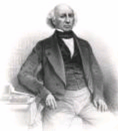Extra Credit Question +5 to quiz, explain WHY the answer you chose is correct ,and hand in on loose leaf.
ACT Question
DIRECTIONS: The passage in this test is followed by several questions. After reading the passage, choose the best answer to each question and fill in the corresponding oval on your answer document. You may refer to the passage as often as necessary.
You are NOT permitted to use a calculator on this test.
During the development of chemistry, many chemists attempted to explain the changes that occur when combustible (capable of burning) materials burn and metals corrode or rust. The following are two proposed theories.
Phlogiston Theory
According to this theory, combustible materials, such as wood, coal, or metal contain a massless "essence" or presence called phlogiston. When combustion occurs, the phlogiston is released from the combusting object and is absorbed by the air. For example, when a piece of wood is burned, phlogiston is released to the air and the wood is converted to ash. The ash is free of phlogiston and can no longer support combustion. Similarly, if a metal is heated, the phlogiston is lost to the air and the metal is converted into a nonmetallic, powdery substance called ash, or calx. The corrosion (changing of a substance by a chemical reaction) of metals, such as the rusting of iron (Fe), also involves the loss of phlogiston from the metal, but at a slower rate than burning. Rust can be turned back into metal by heating it in air with a substance rich in phlogiston, such as charcoal. A transfer of phlogiston from the charcoal to the rust converts the rust back to metal.
Oxygen Theory
According to this theory, burning and rusting involve an element called oxygen, which is found in the air. The complete combustion of a piece of wood involves the rapid reaction of the wood with oxygen gas (O2) to produce carbon dioxide (CO2), which is a nonflammable gas, and water (H2O). The rusting of iron involves the slow reaction of iron with oxygen to produce iron oxides such as Fe2O3. These iron oxides are known as rust. Heating rust with charcoal produces iron because the charcoal combines with the oxygen in the rust. In these transformations, there is a conservation of mass (the total mass of the reactants must equal the total mass of the products in a chemical reaction). In these reactions matter is neither created nor destroyed, but merely transformed.
1. Which of the following assumptions is implicit in the Phlogiston Theory?
A. All combustible substances combine with phlogiston as they burn.
B. All substances that burn contain phlogiston.
C. Metals cannot be broken down by chemical means.
D. The loss of phlogiston by a substance will always result in the production of heat and light.
2. The Phlogiston Theory could best be tested by measuring the:
F. amount of light produced in the burning of a variety of combustible substances.
G. amount of heat produced in the burning of a variety of combustible substances.
H. masses of all the reactants and products before and after the reaction.
J. amount of water produced when a substance burns.
3. According to the Oxygen Theory, the gases produced from the complete combustion of a candle:
A. can support the breathing of a mouse.
B. are nonflammable.
C. are toxic to growing plants.
D. are rich in hydrogen gas.
4. According to the Phlogiston Theory, the complete corrosion of zinc metal in air will yield a powdery substance that:
F. cannot be converted back to zinc metal.
G. contains pure phlogiston.
H. contains no phlogiston.
J. is a combination of the zinc metal and phlogiston.
5. According to the Oxygen Theory, both the burning of a material and the rusting of a metal involve:
A. converting the elements of the material into gaseous compounds.
B. forming oxygen-containing compounds from the elements in the material.
C. removing oxygen from the material and releasing it into the air.
D. producing high temperatures as a result of the chemical reactions.
6. According to the Phlogiston Theory, the gases collected from the complete burning of a piece of charcoal in air would be capable of:
F. converting the ash from corroded tin back to tin metal.
G. supporting combustion of another piece of charcoal.
H. rusting iron.
J. converting wood ash into rust.
7. A chemist heated a sample of mercury for several days in the apparatus shown below. As the experiment proceeded, the mercury in the retort became covered with a red powder, and the volume of mercury increased in the air reservoir. The remaining material in the reservoir would not support combustion. Which of the following theories is supported by the results of this experiment?
A. The Phlogiston Theory, because the red powder resembled an ash
B. The Phlogiston Theory, because the air in the reservoir could not support combustion and therefore did not contain oxygen
C. The Oxygen Theory, because the mercury level dropped in the air reservoir indicating increased oxygen content
D. The Oxygen Theory, because the mercury level rose in the air reservoir indicating decreased oxygen content
Monday, February 2, 2009
Subscribe to:
Posts (Atom)




